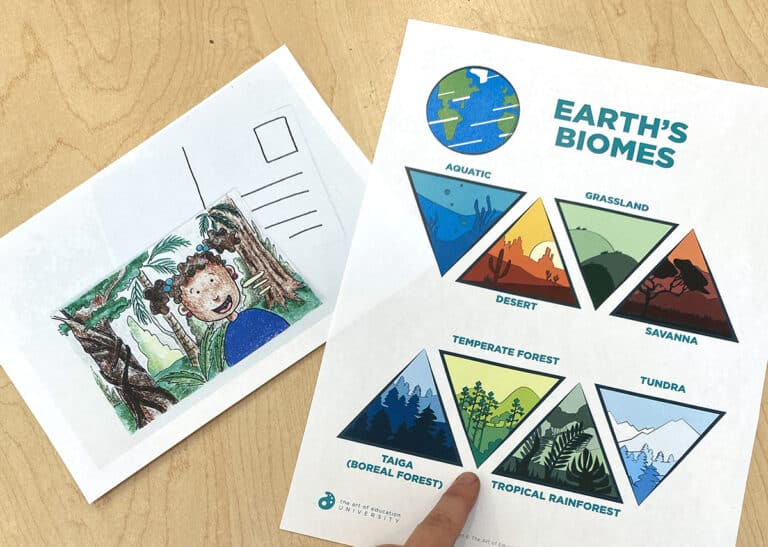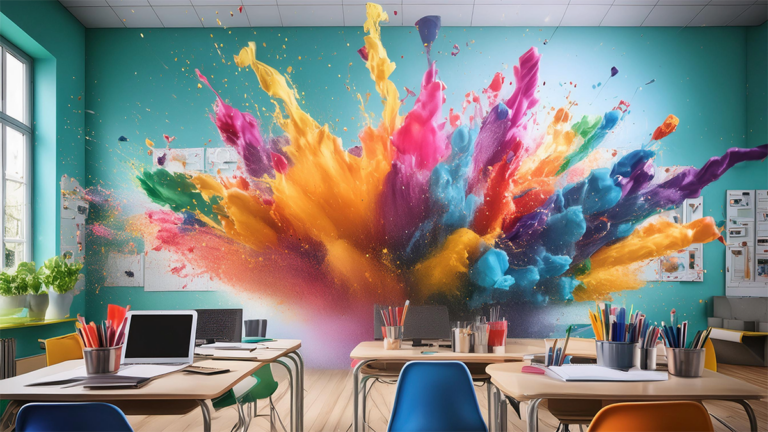During the school year, art teachers are so busy with instruction, materials preparation, displays, and art shows; there is little to no time to pause and reflect on how the year is progressing. However, if you can take a few minutes to be proactive, you can make some great decisions about the next school year right now!
Now is the time while the current year is still fresh in your mind. You may be coming off your winter break feeling refreshed and ready to take on the spring semester!
While you have the energy, take some time to reflect on the previous semester and plan ahead for next fall.
Review Your Grade Book
One way to assess your curriculum is to look back at your grade book. What was completed and assessed this year? Sometimes we plan more than we need or throw in the towel on a new project. Take a look at what students completed each quarter. Jot down a list, or write it up on a board for reflection. By visualizing the year all at once, you can make some informed decisions about what to plan for the next school year.
Begin by deciding if there are any lessons you’d like to eliminate. There’s nothing wrong with looking back on a lesson and admitting it just didn’t go how you thought it would. You can plan it differently or decide to get rid of it altogether. It’s best to make this decision while the lesson is still fresh in your mind.

You may also want to consider the sequence of your lessons. Maybe you tried out a new project and realized it would have fit better at a different point in the school year. Look at the sequence of your lessons and rearrange the schedule to best meet the needs of your students. For example, a great value lesson may make more sense to introduce after students have mastered the use of line. If you introduce a monochromatic painting, it may be best to schedule right after students master value in pencil and/or charcoal.
Ask for Student Feedback
Some of the best feedback you can get is from your students! Design a survey of questions that will help guide your planning for the next school year. If you implemented new projects or a new activity this year, ask your students for honest feedback. Design open-ended questions. A yes or no answer is not going to give you the best information. If a student does not like something about your class, ask them to offer a suggestion for improvements.
This is also a great opportunity to find out what students think you are doing well. You may be surprised at student responses. From your classroom environment to specific projects, you’ll gain a better understanding of where you stand with students and what to build on for the next school year.

For example, if you recently implemented weekly bell ringers or daily drawing prompts, ask students what they like about these activities. They may find that the small project helps them ease into class, sparks creativity, or is a low-pressure task they enjoy. Other students may express that it’s a waste of time. Always leave each question with a follow up like, “Please offer a suggested solution/alternative if you don’t enjoy this activity.” Students could respond with a variety of ideas ranging from reduced frequency to an alternative time.
A student survey gives you valuable information about how to plan ahead. It also lets your students know you want their input, and you care about what they have to say. They can offer suggestions you may never have thought of. Let your students be in on the fun and help shape your classroom experience!
Out with the Old and in with the New
Once you have reviewed your curriculum and made cuts and adjustments, you may have some room to try out new lessons! Now is the time to go back and look at your saved social media posts, your website bookmarks, screenshots, etc. Dig out that conference tote of handouts and see what lesson ideas you want to implement next.
If you are on break or have a free weekend, maybe now would be the time to do some online professional development or take a deep dive into a lesson plan hunt online. Find projects that speak to your passions, your students’ interests, and challenges you’ve always wanted to try in the classroom.

Take another look at your curriculum, and see if you can identify areas of weakness or holes in your courses. Are you covering enough of each process? Are you covering all of the skills and standards you want? If there’s something that needs to be enhanced or introduced, now is the time to do some planning!
For example, if you are more confident with teaching drawing, you might keep those units as is, but want to ramp up your painting lessons. Head over to the AOEU PRO Learning Library and look for some useful professional development and lesson ideas you can share with your students next school year. Be proactive and plan ahead!
Final Thoughts
Planning ahead is sometimes easier said than done. But, you will thank yourself later if you take this time to make adjustments in the midst of teaching, while successes and challenges are still fresh in your mind. Review what you taught, collected, and graded this year. Cut anything that didn’t work for you and your students. Rearrange lessons to make a logical schedule with skills that continue to build throughout the year. Ask your students for their feedback, and add some new lessons you’ve had your eye on. Make time now as an investment in the next school year. You and your students will benefit from a well thought out curriculum!
How do you reflect during the school year?
When do you do the bulk of your planning?
How do you ask students for feedback?
Magazine articles and podcasts are opinions of professional education contributors and do not necessarily represent the position of the Art of Education University (AOEU) or its academic offerings. Contributors use terms in the way they are most often talked about in the scope of their educational experiences.





